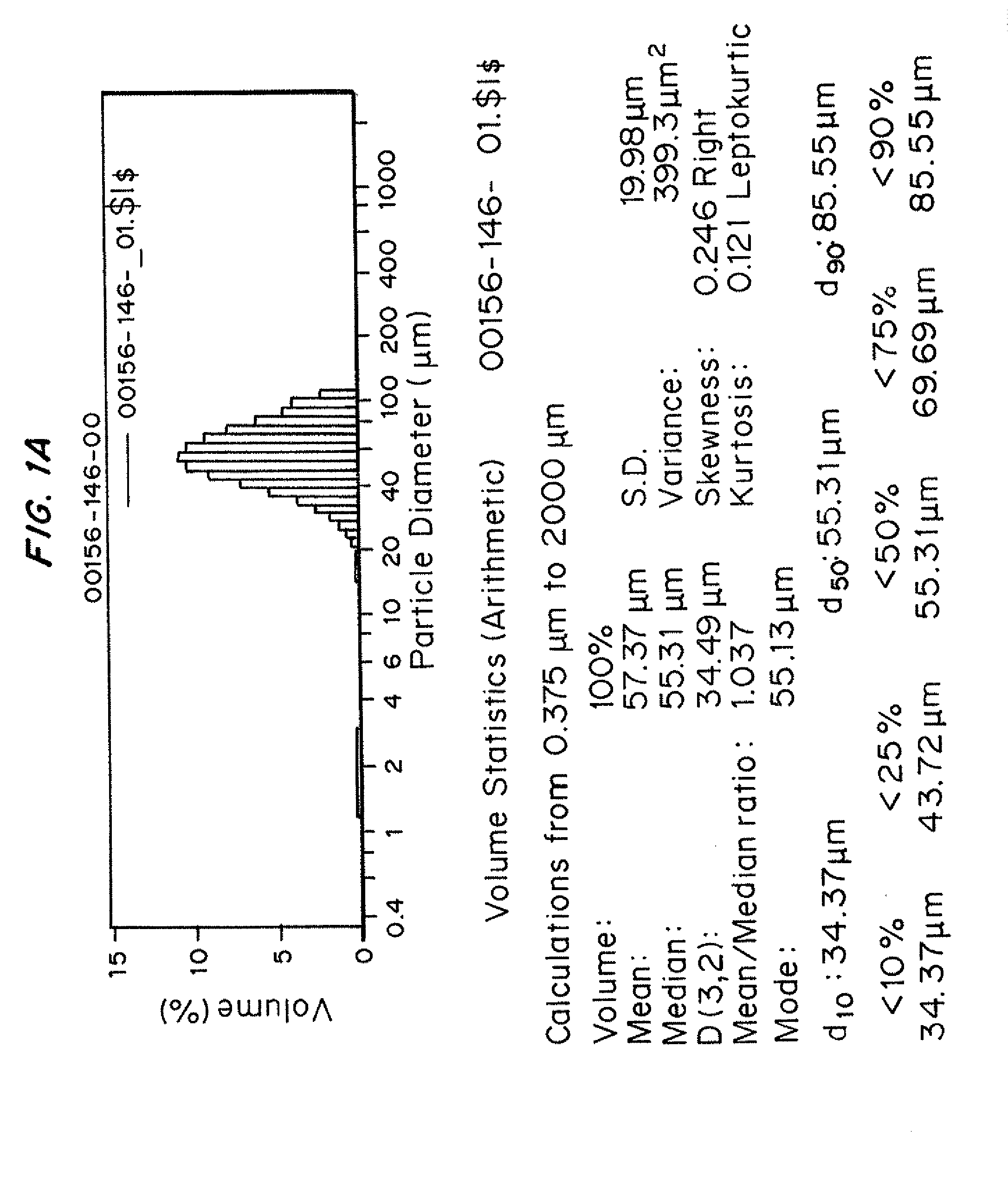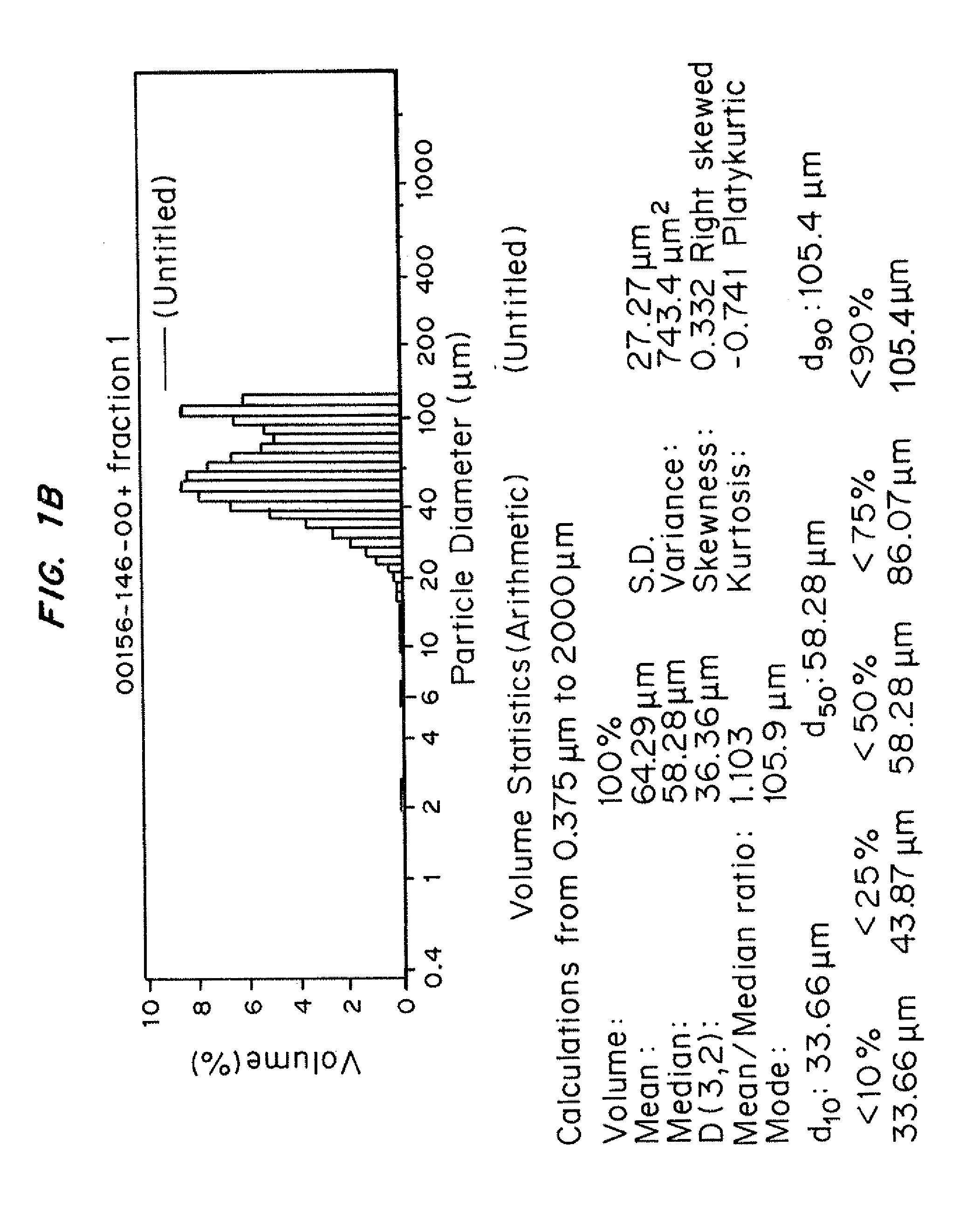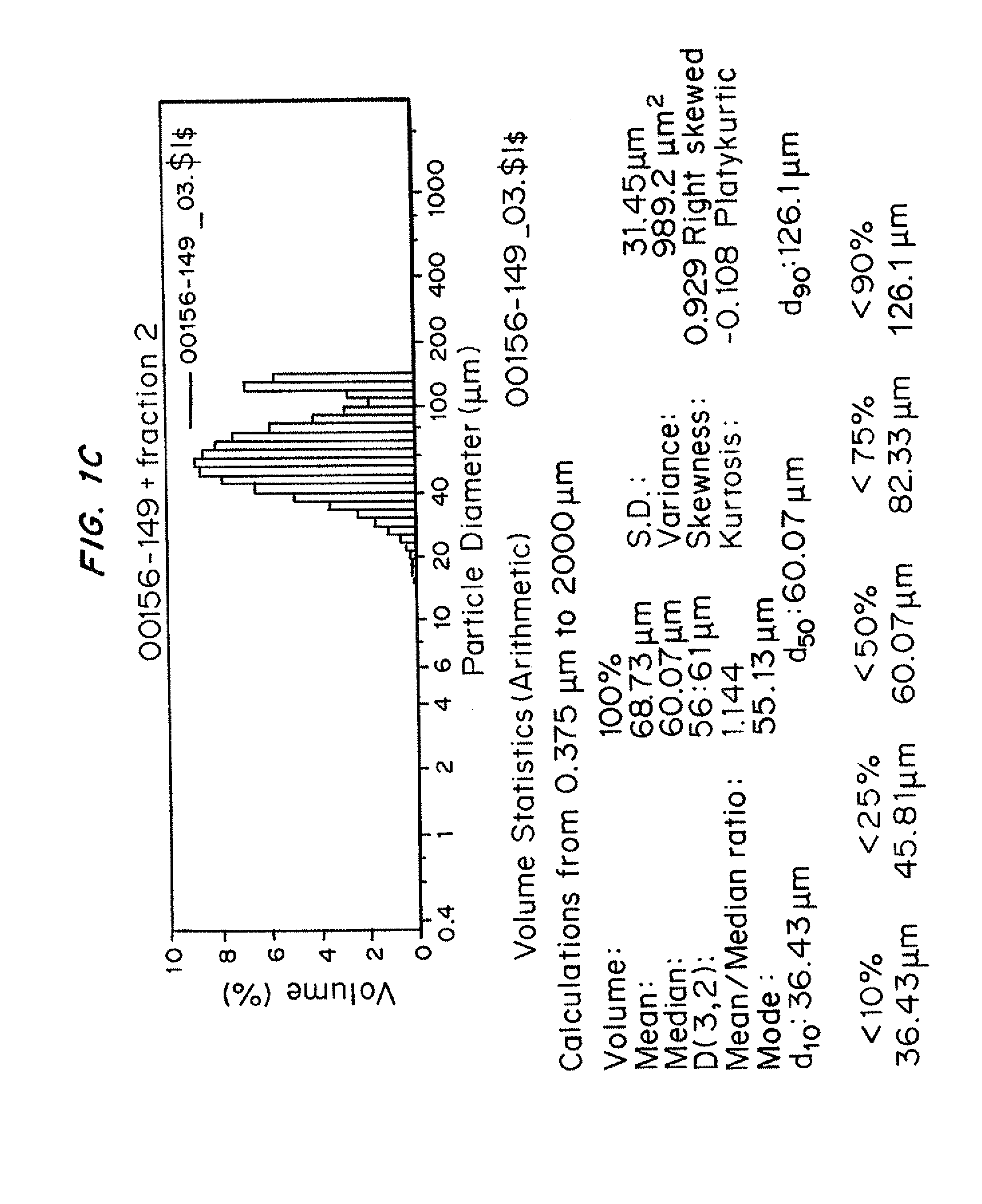Injectable delivery of microparticles and compositions therefore
a technology of microparticles and compositions, which is applied in the direction of microcapsules, peptide/protein ingredients, prosthesis, etc., can solve the problems of reducing the therapeutic effectiveness of the composition, limiting the use of smaller microparticles, and unintended immunological responses, so as to improve the surface properties and improve the surrounding flow properties
- Summary
- Abstract
- Description
- Claims
- Application Information
AI Technical Summary
Benefits of technology
Problems solved by technology
Method used
Image
Examples
example 1
Preparation of Microparticle Formulations
[0191]Polymers used in the Examples.
[0192]Microparticle formulations were prepared using a variety of biodegradable polyester polymers. The polymers used in these examples are identified below in Table 3. Individual polymers have been assigned a unique letter identifier code to allow simple reference to individual polymers in subsequent examples.
TABLE 3Description of the polymers used in the examplesReportedReportedpolymermolecularPolymerPolymer descriptionsinherentweight byIdentifier(copolymer ratios andviscosity(2)GPC (Mw)Vendor lotCodecomposition)(1)(dL / g)(Daltons)Vendor(3)numberA75:25 DL-PLG0.46BPID98051BDL-PL1.04APTAPT080802-1CPolycaprolactone,42,000Aldrich01222JDPCLDTephaFLEX ® (low150,000TephaDC-10-2-1MW)ETephaFLEX ® (high400,000TephaDC-8-62-1MW)FTephELAST, 30%560,000TephaDC-06-9-1(high MW)I72:25 DL-0.11Alkermes01-141-134lactide / caprolactoneOTephELAST, 30%130,000TephaDC 06-91-1(low MW)PTephELAST, 20%130,000TephaDC-06-56-(low MW)2 (low)...
example 2
Injectability Testing of Representative Prior Art Microparticle formulations prepared from biodegradable polyesters PLG, DL-PL, and PCL
[0240]In this and subsequent Examples, information on the composition and characterization of individual microparticle batches are tabulated along with the results of injectability screening tests. Using Table 6 below as an example, information on individual microparticle batches is listed in columns. The first section of information for each sample identifies sample lot number, the polymer(s) used to prepare the sample, and also indicates whether a dry-sieving step was performed. The specific polymer (or polymers) used to prepare the individual microparticle sample are listed as component 1, 2, and 3. The letter code used in this table refers to specific polymers that are identified above. When multiple polymers have been combined in an admixture in the preparation of a microparticle composition, the weight percent of each polymer component used to ...
example 3
Microparticle Formulations Prepared from Admixtures of DL-PL and PCL that can Pass Through Smaller Diameter Needles
[0245]Microparticle formulations were prepared based on compositions containing admixtures of DL-PL and PCL polymers containing ratios ranging from 95:5 to 50:50 of the DL-PL and PCL, respectively. Microparticle formulations were prepared as described above. These microparticle formulations were evaluated for syringe injectability using the 0.1 wt % TWEEN® 80 injection vehicle.
[0246]The microparticle formulations are described in Table 7 below, which also contains results from the injectability screening testing.
TABLE 7Batch information and injectability screening results of Example 3.AdmixtureAdmixtureAdmixtureAdmixtureAdmixtureFormulationof:of:of:of:of:ParametersSusp.95% DL-95% DL-90% DL-80% DL-PL50% DL-Needle sizeconc.,PLPLPL20%PL(Gauge)wt %5% PCL5% PCL10% PCLPCL50% PCLFormulation0156-0420156-0900061-1490061-1510061-153lot numberPolymer95% B95% V90% B80% B50% Bcompon...
PUM
| Property | Measurement | Unit |
|---|---|---|
| mean particle size | aaaaa | aaaaa |
| diameter | aaaaa | aaaaa |
| diameter | aaaaa | aaaaa |
Abstract
Description
Claims
Application Information
 Login to View More
Login to View More - R&D
- Intellectual Property
- Life Sciences
- Materials
- Tech Scout
- Unparalleled Data Quality
- Higher Quality Content
- 60% Fewer Hallucinations
Browse by: Latest US Patents, China's latest patents, Technical Efficacy Thesaurus, Application Domain, Technology Topic, Popular Technical Reports.
© 2025 PatSnap. All rights reserved.Legal|Privacy policy|Modern Slavery Act Transparency Statement|Sitemap|About US| Contact US: help@patsnap.com



